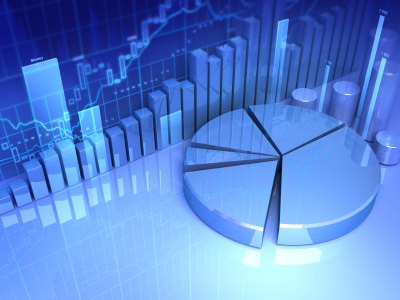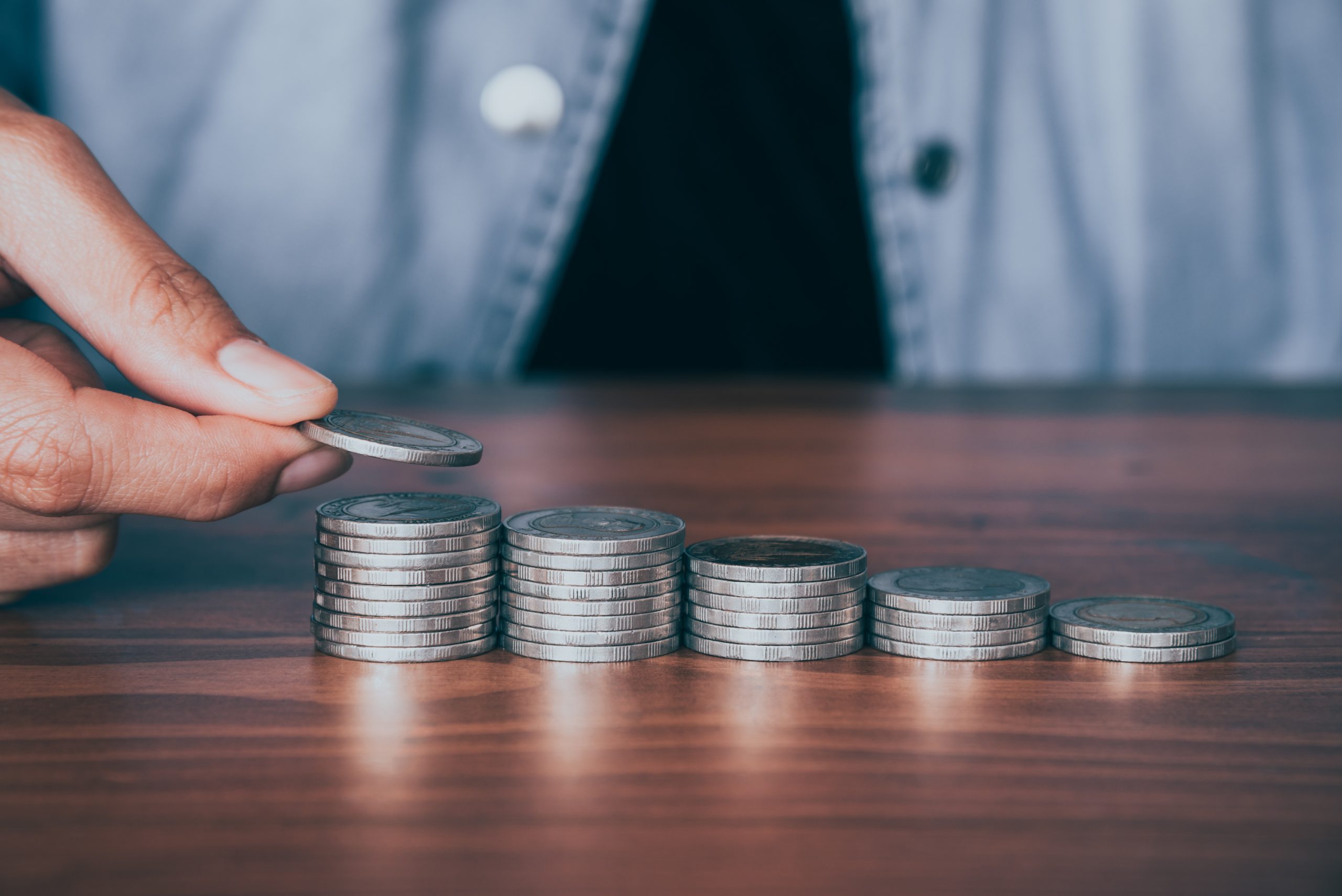
Market briefing – 19th August 2020
As the graph shows the US equity market, as represented by the S&P 500(2) (in sterling terms), continued its upward trend, no matter what announcements were made regarding the horrendous UK GDP (gross domestic product) numbers.

Source: Financial Express(1)
As announced on 12th August, according to the UK’s Office for National Statistics (ONS), the UK economy reduced in size by 20.4% for the period April through to June (Q2) when compared against (Q1) January through March (which fell by 2.2%). This was the second consecutive quarter of a reduction in GDP and so technically, the UK is now in recession (3).
The ONS continued to say that this is the “largest quarterly contraction in the UK economy since [ONS] quarterly records began in 1955.”(3)
The reasons were obvious. The ONS confirmed by saying this “reflects the ongoing public health restrictions and forms of voluntary social distancing that have been put in place in response to the coronavirus (COVID-19) pandemic compared with the same quarter a year ago, the UK economy fell by 21.7%.”(3)

Source: Office for National Statistics (4)
It continued, “it is clear that the UK is in the largest recession on record. Our latest estimates show that the UK economy is now 22.1% smaller than it was at the end of 2019, highlighting the extent of this recession. The decline in the second quarter was driven by the 20% fall in output in April 2020, the biggest monthly fall on record reflecting widespread monthly declines in output across the services, production, and construction industries.”(3)
And how did the relevant FTSE indices immediately react?
Although slightly dropping away since, as the green arrow shows on the graph, all 3 indices initially went up from their previous day’s trading.

Source: Financial Express(1)
Looking in more detail, the FTSE 250(5) saw its price-only figure having a one day rise between 11th and 12th August of 0.51%…

Source: Financial Express(1)
… with the FTSE All Share(6) seeing its price-only figure having a one day rise of 1.74%…

Source: Financial Express(1)
… and the FTSE 100(7) saw the largest rise of its price only figure, going up from 6154 on the 11th August to 6280 on the 12th August; a one day rise of 2.04%.

Source: Financial Express(1)
So why didn’t shares react by immediately falling? The ONS attempt to answer this when they say, “there has been a phased easing of lockdown restrictions through May and June, including the reopening of non-essential shops. This is reflected in the latest figures, which show some rebound in June, where GDP increased by 8.7% on the month.” This may very well have had an impact on the minds and sentiment of traders.
While the UK is some way off where it was pre-pandemic, June’s figures have generated small hopes. Specifically, strong performance by oil firms and a calming of US-China tensions have assisted. Also, talk of a vaccine may also now be a cause for optimism. To a certain extent, traders were waiting for these figures and so seeing them in the real world was a confirmation rather than a shock.
Also, according to analysts July saw a recovery, which has continued on into the early parts of this month. Although it’s likely to take a long time to get back to pre-Covid levels as the economy, together with behavioural and social changes, continue to adapt.
As can be seen from the ONS bar chart (when compared with some other G7(8) countries), whilst the UK’s economy suffers its worse quarter contraction on record, the US – together with Germany, France and Italy – saw better numbers; albeit still in double digit contractions.

Source: Office for National Statistics (4)
In terms of the US, recovery continues to feed Wall Street (as our graph at the very start shows).
This is brought into stark contrast when compared against the FTSE 100, down over 19% since the start of the year.
Both the Nasdaq(9) and S&P 500, in sterling terms, are well above their calendar year start positions (Nasdaq up 25%; S&P 500 up 5%).

And in terms of where they were at the beginning of the bear market in February, in sterling terms, the S&P 500 is just under 1% down, with the Nasdaq being over 11% up over the same time frame.
Why is the US reacting more favourably? In addition to the massive returns provided by the FANMAG(10) stocks, continued optimism that a vaccine will be found soon, no additional hiccups in US-China relations, and the prospect of a big stimulus package in the US, are all contributing to investors looking positively beyond the global pandemic.
What should this tell you?
As is often written, “past performance is no guide to future returns”, and so investors should diversify, not only across individual stocks but across different asset types (i.e. bonds as well as equities, etc.), geographical jurisdictions (e.g. US as well as UK), investment styles (i.e. active management and passive investing) and different investment philosophies (i.e. growth and value).
While individual stocks and markets will continue to go up and down, smart diversification across assets, geographical jurisdictions, styles and philosophies can help investors minimise their risks. Although it does not guarantee against loss, smart diversification is the most important component of reaching long-range financial goals while minimising risk.
However, remember that no matter how diversified a portfolio is across asset types, geographical jurisdictions, investment styles and philosophies, risk and reward do typically go hand-in-hand and as such, risk can never be eliminated completely.
It is true the short-term horizons shown in some of the graphs above enhance the uncertainty due to the unpredictability of this current situation. However, it is important to remember that we very often have a long-term investment time horizon.
As we have said before, we will continue to monitor the current financial situation and keep you notified of any changes that are made. Please seek professional financial advice if you wish to discuss your financial situation further.
The next market briefing will be published on 9th September 2020.
Sources
(1) Financial Express FE Analytics
(2) The S&P 500 or Standard & Poor’s 500 Index is a market-capitalization-weighted index of the 500 largest U.S. publicly traded companies. The index is widely regarded as the best gauge of large-cap U.S. equities. Other common U.S. stock market benchmarks include the Dow Jones Industrial Average or Dow 30 and the Russell 2000 Index, which represents the small-cap index – https://www.investopedia.com/terms/s/sp500.asp
(3) ONS (Office for National Statistics) https://www.ons.gov.uk/economy/grossdomesticproductgdp/bulletins/gdpfirstquarterlyestimateuk/apriltojune2020/previous/v1
(4) Source: Office for National Statistics – GDP first quarterly estimate
Notes:
• Q1 refers to Quarter 1 (Jan to Mar), Q2 refers to Quarter 2 (Apr to June), Q3 refers to Quarter 3 (July to Sept), and Q4 refers to Quarter 4 (Oct to Dec).
• Index is referenced to Quarter 4 (Oct to Dec) 2019.
(5) The FTSE 250 is a capitalisation-weighted index: this means that companies are included based on the size of their market capitalisation, the value of the shares they have out there in the market. The companies included in the FTSE 250 will be the 101st to 350th largest companies listed on the London Stock Exchange – https://www.thearmchairtrader.com/markets/ftse-250-index/
(6) FTSE All Share – An index tracking approximately 600 publicly-traded companies listed on the London Stock Exchange and representing approximately 98% of the LSE’s market capitalization. Each quarter, the FTSE re-evaluates the companies tracked on the index and makes necessary adjustments to ensure that it represents the correct companies. It includes all companies tracked by the FTSE 100, the FTSE 250, and the FTSE Small Cap. It is weighted for market capitalization – https://financial-dictionary.thefreedictionary.com/FTSE+All-Share+Index
(7) The Footsie is an index that tracks the 100 largest public companies by market capitalization that trade on the London Stock Exchange (LSE). The FTSE 100 represents roughly 80 percent of the LSE’s market capitalization. FTSE is an acronym for the Financial Times and the LSE, its original parent companies. The FTSE is now owned and maintained by the LSE. It has similar importance in London to the U.S. Dow Jones Industrial Average and S&P 500 and is a major indicator of the performance of the broader market – https://www.investopedia.com/terms/f/footsie.asp
(8) The Group of Seven (G-7) is an intergovernmental organization that meets periodically to address international economic and monetary issues. Countries include the U.S., U.K., France, Germany, Italy, Canada, and Japan. The G-7 was formerly referred to as the G-8 because Russia, one of the original eight, was suspended from the group in 2014 after illegally annexing Crimea. The G-7 is not an official, formal entity and, therefore, has no legislative or authoritative power to enforce the recommended policies and plans it compiles – https://www.investopedia.com/terms/g/g7.asp
(9) The Nasdaq Composite Index is the market capitalization-weighted index of over 2,500 common equities listed on the Nasdaq stock exchange. The Index’s composition is nearly 50% technology, with consumer services, health care and financials the next most prominent industries – https://www.investopedia.com/terms/n/nasdaqcompositeindex.asp
(10) Facebook, Apple, Netflix, Microsoft, Amazon, Google (owned by Alphabet Inc.)

 0330 332 7866
0330 332 7866 advise-me@fosterdenovo.com
advise-me@fosterdenovo.com Search
Search






